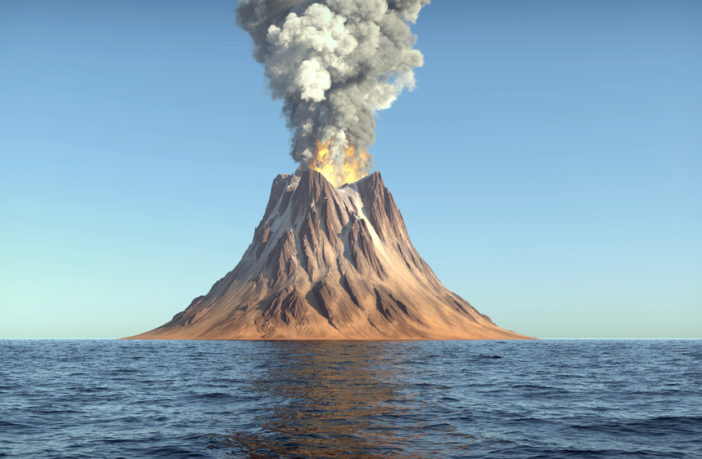An Open University scientist is among those to have revealed the true extent of the internal “plumbing system” that drives volcanic activity around the world.
Dr Frances Jenner is co-author on a new study published in Nature, which has challenged existing knowledge of the structure of ocean volcanoes.
The study involved an examination of pockets of magma contained within crystals which revealed that the large chambers of molten rock which feed volcanoes can extend to over 16 km beneath the Earth’s surface.
Previous estimates suggested that magma chambers were only located up to 6 km below the surface.
How volcanoes are supplied with magma and ultimately erupt
Interconnected magma chambers and reservoirs are the key driver of the dynamics of volcanic systems around the world, so understanding their nature is an important step towards understanding how volcanoes are supplied with magma, and, ultimately, how they erupt.
Mid-ocean ridges in particular make up the most significant volcanic system on the planet, forming a roughly 80,000 km-long network of undersea mountains along which 75 per cent of Earth’s volcanism occurs.
However, because these volcanoes are located under thousands of metres of water, and sometimes under permanent sea ice, scientists are only just starting to understand what the subsurface architecture of these volcanoes look like.
Minerals examined acted like tape recorders
It is known that magma plumbing systems exist below the Earth’s surface. These can be thought of as a series of interconnected magma conduits and reservoirs, much like the pipes and tanks that make up plumbing systems in a house. For mid-ocean ridges, the ‘tap’ is a volcano.
In their study, the team analysed common minerals such as olivine and plagioclase which grew deep within the volcanoes and were subsequently erupted from the Gakkel Ridge located beneath the Arctic Ocean between Greenland and Siberia. These minerals act as tape recorders from which changes in the physical and chemical conditions of the environment in which they grew can be measured. Critically, the team were able to record what processes occurred, and at what depths these minerals began to crystallise, in magma reservoirs.
Dr Jenner, senior lecturer in the School of Environment, Earth and Ecosystem Sciences at the OU said: “It was great to be involved in a project that revealed such important new clues to help us to understand how the oceanic crust is formed.”
“The analytical aspects of this study were quite challenging, as many of the melt inclusions from the Gakkel Ridge are tiny!”
The OU’s school specialises in such types of analysis. They used laser equipment to drill tiny holes into the melt inclusions and then measured these tiny volumes of material on a mass spectrometer.
Lead author of the study, PhD student Emma Bennett, from the School of Earth and Ocean Sciences, at Cardiff University, said: “To calculate the depths of magma reservoirs we used melt inclusions, which are small pockets of magma that become trapped within growing crystals at different depths in the magmatic system. These pockets of melt contain dissolved carbon dioxide and water.”
Analysing the melt inclusions meant they could start to reconstruct the architecture of the magmatic system, she said.
The results showed that magma plumbing systems at mid-ocean ridges extend to much greater depths than previously thought. Conventionally, magma chambers were thought of as being located within the Earth’s oceanic crust, which normally extends to a depth of around 6 km.
Yet the new data has shown that the plumbing system extends to a depth of at least 16 km. This means that the magma chambers that fed the Gakkel Ridge volcanoes are located much deeper down, in the mantle.



